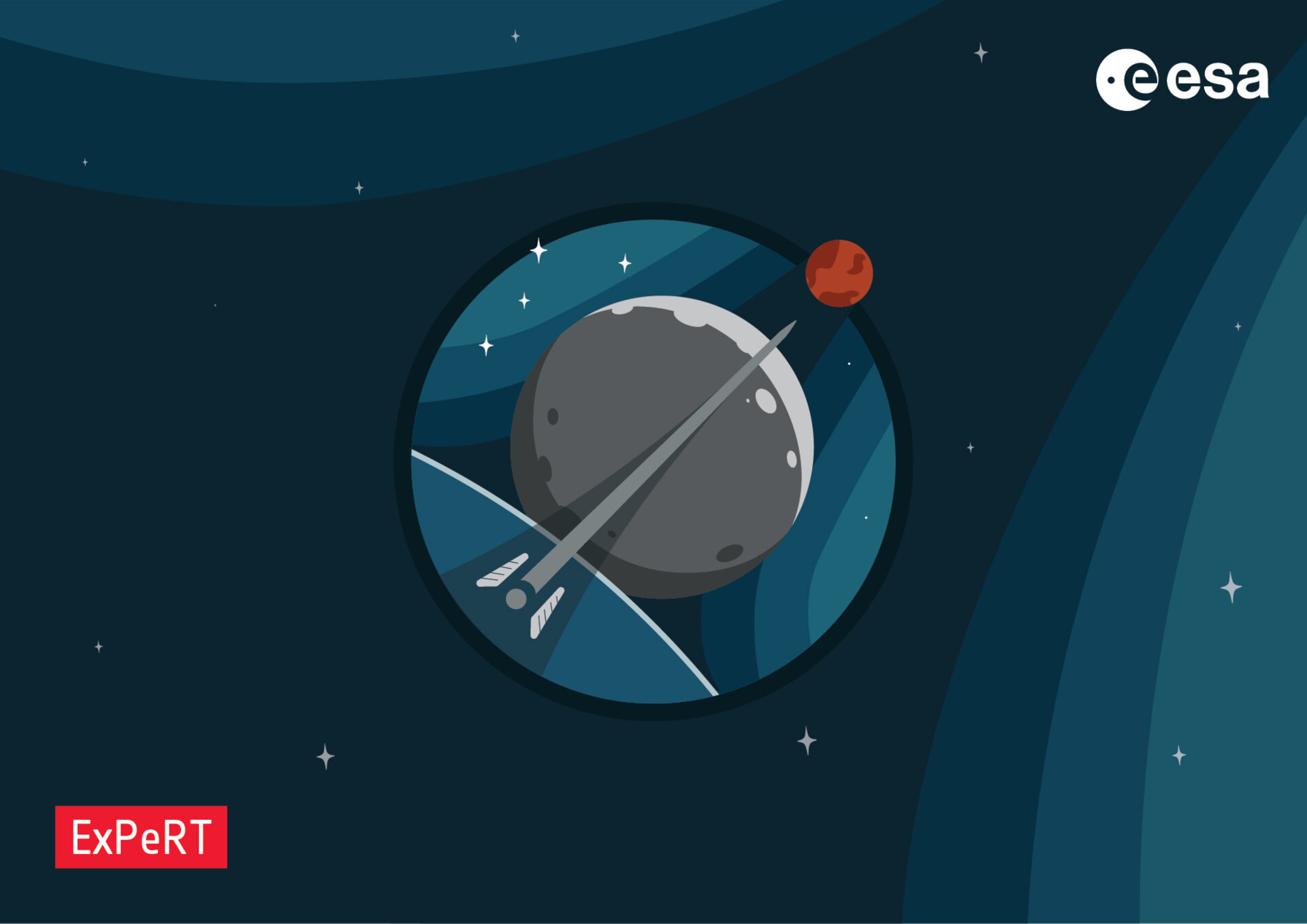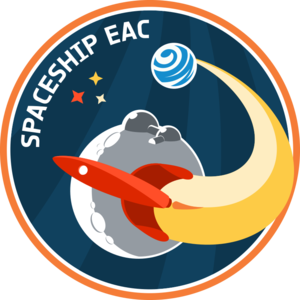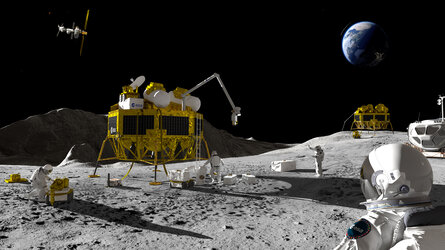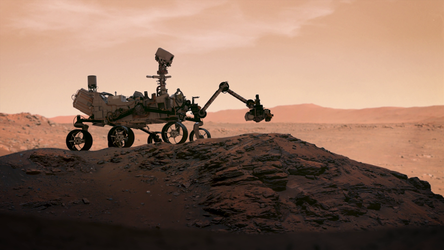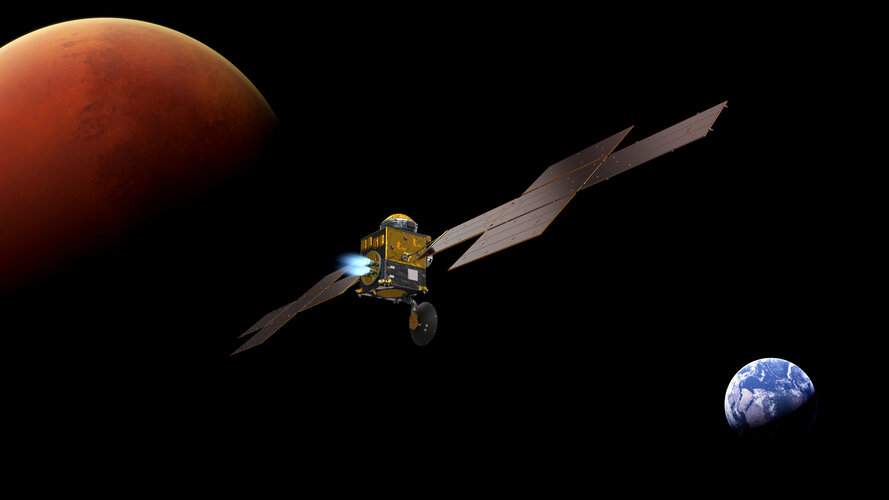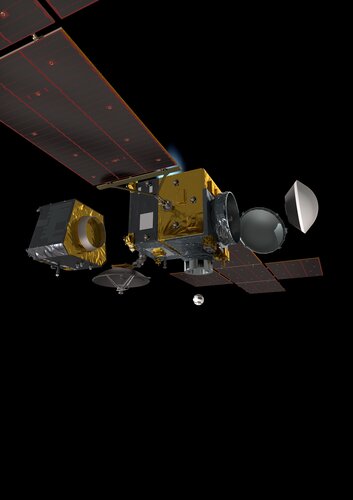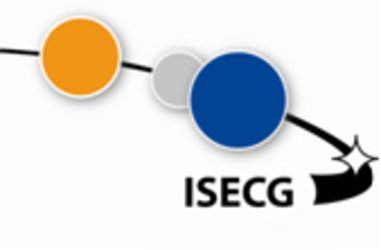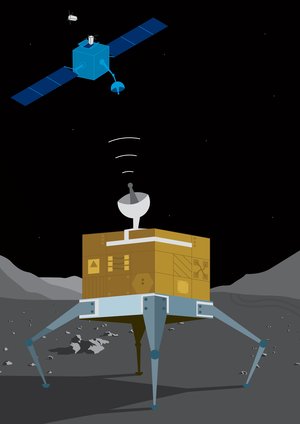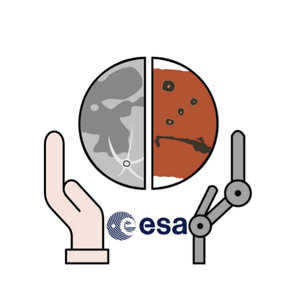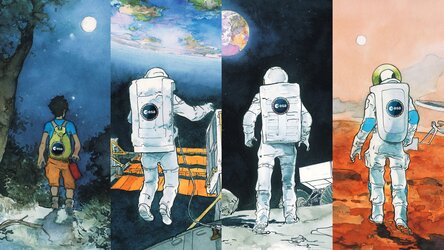ExPeRT Exploration Preparation Research and Technology
ExPeRT (Exploration Preparation, Research and Technology) is part of ESA’s Terrae Novae European Exploration Envelope Programme (E3P).
E3P is an optional programme managed by the Human and Robotic Exploration (HRE) directorate. The Terrae Novae E3P goals are to secure Europe’s central role in global space exploration, deliver new results in both basic and applied science, and offer a compelling vision of global endeavour, enriching society and inspiring the next generations. The programme structures its main activities around four cornerstone exploration campaigns:
- Humans in low Earth orbit;
- Humans beyond low Earth orbit;
- Lunar robotic exploration;
- Mars robotic exploration.
These are supported by two transversal activity areas, SciSpacE (Science in Space Environment) and ExPeRT (Exploration, Preparation, Research and Technology).
The ExPeRT area is created to integrate all activities needed to prepare for and initiate new human and robotic exploration missions. It does this by integrating, coordinating, and managing the development of studies and technologies for future Exploration missions to low Earth orbit, Moon and Mars destinations. This preparation is essential to position Europe for upcoming opportunities with various partners expected in the next few years.
The objectives of ExPeRT are to:
- ensure that future exploration missions, projects and associated technologies are well prepared and de-risked;
- facilitate the selection process of new exploration missions and projects by providing the adequate maturity for system definition and technology readiness;
- establish new collaborations with international partners (both existing and emerging) to create future exploration opportunities;
- identify European leadership and enable autonomous capability.
ExPeRT therefore:
- Implements architecture and mission definition studies for exciting and inspiring new robotic and human missions and associated vehicles and infrastructure elements;
- Prioritises and oversees early development of technologies needed for future exploration missions up to a sufficient maturity (Technology Readiness Level - TRL) for implementation;
- Assesses the scientific, technological and overall benefits of missions and projects to be proposed for implementation;
- Explores new opportunities for cooperation in space exploration with established international partners as well as new ones.
ExPeRT oversees mission feasibility and system definition studies for all exploration activities. It is responsible for the implementation of technology activities with an aim of reaching a technology readiness of TRL5 prior to the start of mission implementation and it will work in partnership with ESA’s Directorate of Space Engineering and Technology on defining low TRL exploration-related technology activities to be carried out in the Technology Development Element (TDE) of the Discovery, Preparation and Technology Development (DPTD) programme.
Technology areas
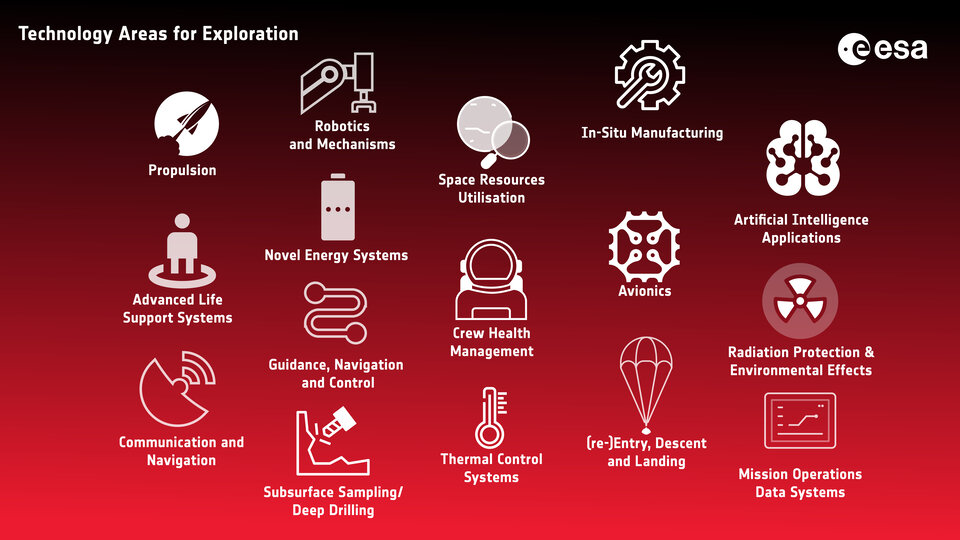
From the list of mission studies and concepts studied within ExPeRT a list of key enabling technologies was identified and relevant technology areas were defined.
-
Propulsion
– With chemical propulsion, the propellants and associated performances can cover a wide range of scenarios, including high-thrust capability.
– Interplanetary missions in the frame of exploration require electric propulsion systems to cruise and perform orbit transfer at the destination. -
Novel energy systems
– Fuel cells can store and provide energy when required, in particular during periods of reduced solar illumination, have high specific energy densities and allow the use of native resources present in the destination environment.
– High power, high voltage, high efficiency autonomously deployable surface solar arrays are needed to generate reliable electric power for orbital and surface assets over the mission duration.
– Radioisotope power systems allow expansion into a new era for space exploration relying on mass-efficient, high-energy solutions to provide power to deep space vehicles. -
Robotics and mechanisms
These are technologies for surface or orbit applications at the Moon and Mars, inside and outside the International Space Station (ISS), autonomously or tele-operated, in the area of robotics and mechanisms for space exploration. -
Artificial intelligence applications
Artificial intelligence is an enabling technology for new exploration scenarios, changing the way spacecraft and missions are designed, implemented and operated. Autonomous systems for space exploration are key and can support varying levels of autonomy. -
Advanced life support systems
Life support systems and technologies are essential to human exploration missions. Whether based on physico-chemical or biological processes, the systems must be regenerative and provide higher closed-loop life support to increase mission feasibility. -
In-situ manufacturing
In-situ manufacturing or assembly of new (sub)systems and components, or dedicated tools if needed during an exploration mission uses both metallic and non-metallic materials, potentially through recycling, either autonomously or by robotic operations. -
Crew health management
Crew systems with an integrated system approach, shift responsibility from the ground to the vehicle. The vehicle, its medical system and the crew all contribute to decision-making and task execution, thus radically increasing autonomy, flexibility and responsiveness. -
Space resources utilisation
In-situ resources utilisation represents a paradigm shift in how we will approach exploration in the future, reducing or removing the logistical burden of support from terrestrial sources and instead moving towards self-sufficiency and enhanced mission capabilities by identifying and using local resources. -
Radiation protection and environmental effects
Characterisation of the radiation environment experienced by humans and electronics during Moon and Mars exploration is paramount. Measurement techniques and protection methods will be used to mitigate the effects of proton, heavy ion and neutron irradiation. -
Communication and navigation
Future robotic and human missions to the Moon and Mars and its vicinity will demand an increase in current communication data rate and bandwidth capability. Accurate navigation and tracking is key to improving the performance of surface asset communication and navigation. -
Subsurface sampling/deep drilling
Drilling for access and sampling on the Moon and Mars at depth, in support of science, resource prospecting and utilisation. -
Guidance, navigation and control
The proximity manoeuvres between a spacecraft and the target (spacecraft rendevous or landing surface) are considered critical from the point of view of the guidance, navigation, and control operations. Accurate navigation is needed to precisely and safely guide and control the spacecraft towards the target object. -
Avionics
Exploration missions can require ad-hoc development of avionics items to meet specific requirements of dependability, performance, interoperability, autonomy and criticality level. -
(re-)Entry, descent and landing
Entry, descent and landing systems for future Moon and Mars robotic and eventually human exploration missions, including Earth return. -
Thermal control systems
Thermal control systems maintain the system within its nominal (non-)operational temperature throughout the mission duration. All future vehicles (both crewed and non-crewed) will require thermal control systems. -
Mission operations data systems
Operations systems, data systems and ground technologies are key for exploration missions.
A list of ESA technology activities relevant for ESA’s space exploration domain is updated annually. It presents a snapshot of ESA technologies and ongoing developments. It also reports on the best use of available resources within ESA Programmes, the associated synergies and coordination.
The portfolio is based on the following funding pillars:
- TDE (former TRP) – Technology Development Element of DPTD,
- GSTP – General Support Technology Programme,
- ExPeRT – Exploration Preparation, Research and Technology element of E3P,
- MREP – Mars Robotic Exploration Preparation programme.
Technology development is important to prepare for future sustainable exploration. HRE can develop new technologies, build on past or current developments, or directly use existing basic technologies or building blocks to develop the products and equipment for use in Exploration missions.
ExPeRT Technology Requirements define the technology needs in the Exploration application domain at ESA. These can be of two types, technology-push or mission-pull requirements.
In 2020, the Exploration Technology-Push Requirements were defined. This list of requirements can be used as a reference for the definition of national technology work plans in some of the E3P Participating States, where funding from national programmes is available. It can also be used to guide prioritisation of initiatives by European industry and ESA's General Support Technology Programme (GSTP) projects. The Technology-Push Requirements sheets are not a specific proposal of work in ExPeRT. However, the activities that are proposed in the ExPeRT work plan in E3P Period will implement a subset of the technology requirement sheets set out in this document. A ‘technology-push’ activity for exploration is expected to result in a step-change or breakthrough (disruption) in a technology that may, in the future, facilitate exploration, but is not driven by a mission requirement or ‘mission-pull’ already identified. Moreover, it is intended to foster innovative ideas from technical experts and allows high-level performance targets to be considered. Such high-level performance targets were defined by the ISECG Technology Working Group for its Global Exploration Roadmap (GER) critical technologies and are referred to in the specific technology areas of the Technology-Push Requirements document.
The ExPeRT Technology Requirements definition was complemented with the 2021 Mission-Pull Technology Requirements derived from mission concepts and feasibility studies at ESA. A ‘mission-pull' activity responds to a specific identified exploration mission need and requirements are derived from completed mission concept/system studies in the Directorate of Human and Robotic Exploration. The process for the definition of exploration mission-pull technology requirements is repeated each year, with the 2022 Mission-Pull Technology Requirements and the 2023 Mission-Pull Technology Requirements now available.
The ESA In-Situ Resource Utilisation (ISRU) campaign technology roadmap was originally elaborated in 2020. It presents a general overview of system and technology activities at ESA related to space resources and their potential use. It ranges from past, present and potential future activities under planning, throughout a variety of funding schemes according to specific maturity levels, which will be carried out in a coordinated way. It serves the purpose of raising awareness of the overall programme of work and effort towards the understanding and potential use of space resources. In 2023, an updated ISRU campaign technology roadmap provides an expanded overview into the developments at ESA.
For further information, please email the ExPeRT team within ESA's Directorate of Human and Robotic Exploration.


